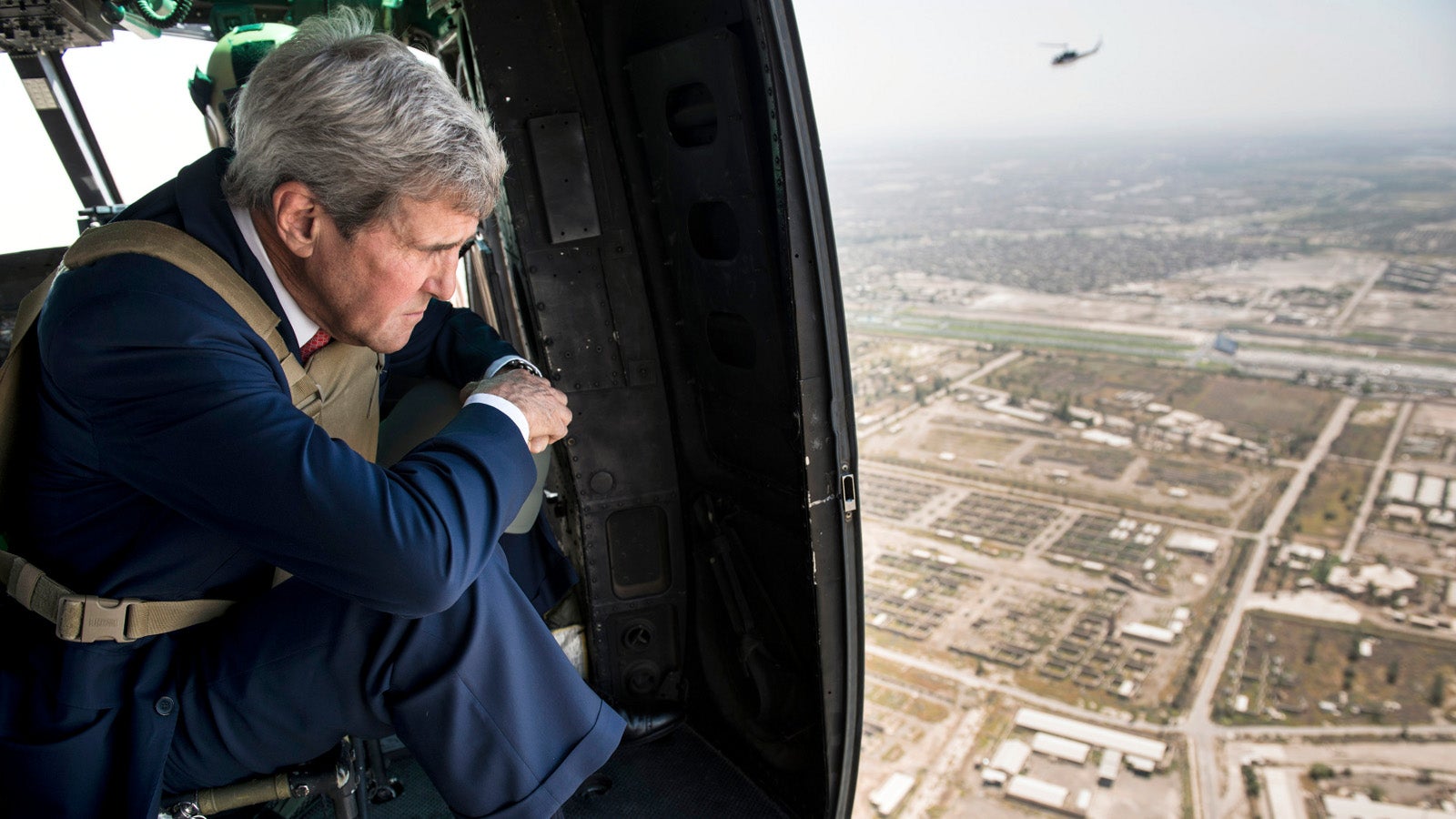The US is about to learn once again that air power alone can’t defeat an insurgency
Barack Obama says that there aren’t going to be US combat troops fighting the Islamic State in Iraq and Syria. His top generals say, well, maybe there will be.


Barack Obama says that there aren’t going to be US combat troops fighting the Islamic State in Iraq and Syria. His top generals say, well, maybe there will be.
No one should be surprised.
The recent history of US interventions suggests that air power alone isn’t enough to defeat insurgents. While bombing campaigns can give traditional forces control of a battlefield, they don’t solve the political problems that lead people to take up arms against a government they see as illegitimate. If that sounds obvious, just consider the pattern:
- In Afghanistan after 9/11, a US air campaign allowed the Northern Alliance to defeat the Taliban on the battlefield and set up a new government. But despite air superiority, a US occupation force that peaked at 100,000 troops, and 338,000 Afghan security forces trained by the US, the Taliban remains a threat to the unsteady government.
- In Iraq in 2003, a US ground and air campaign swiftly defeated Iraq’s traditional military, but an anti-American insurgency and simmering ethnic conflicts followed. Only a change in tactics and a “surge” in troops gave the the fledgling Iraqi government space to gain control of the country. After US troops pulled out, the political coalition set in place appeared to dissolve, along with the army, in the face of ISIL’s attacks—and it’s no coincidence that ISIL’s military leaders are Saddam Hussein’s former generals.
- In Libya in 2011, a Western military coalition intervened in a civil war to help ouster dictator Muammar Gaddafi, using air power to aid rebel forces. Without foreign troops on the ground, security deteriorated as rival militias fought for territory and two separate governments formed. Now, a civil war appears to be in the offing as an international conference in Madrid attempts to find a solution—without any of the Libyan factions represented there.
What does all this tell us about the fight against ISIL?
The strategy described by the White House is to provide air support and training to the Iraqi army (and to Iranian-backed Shiite militias and Kurdish fighters) to drive the extremists out of Iraq, while training Syrian rebels and supporting them to defeat ISIL in Syria. Assume that this strategy succeeds without large US troop deployments—and that’s a huge assumption on its own. What then?
In Iraq, the US is cobbling together a new unity government, promising this time that it will be inclusive enough to avoid violent factionalism—but what if it isn’t? And what if newly empowered Kurds make good on their long-standing hope of forming their own country? And Iraq is comparatively uncomplicated—in Syria, if ISIL is defeated, will the West simply move on to backing Syrian rebels in their civil war against Bashar al-Assad’s regime? How will Russia and China respond to that?
The danger is not that the US and its coalition will be unable to scatter ISIL to the winds, but that it will not have the capacity to leave behind stable institutions afterward without a massive (and thus unlikely) deployment of troops and cash. It’s a tall order. Just ask Andrew Exum, a former US soldier and Defense Department advisor who served in Afghanistan and Iraq:
The legal justification the Obama administration relies upon for its war powers is the same one that justifies air strikes against extremist groups in Somalia, Yemen and Pakistan—failed or failing states where US counter-terror policy relies on dubious local allies and drone strikes to manage extremist groups. That may well be the future in Iraq and Syria.